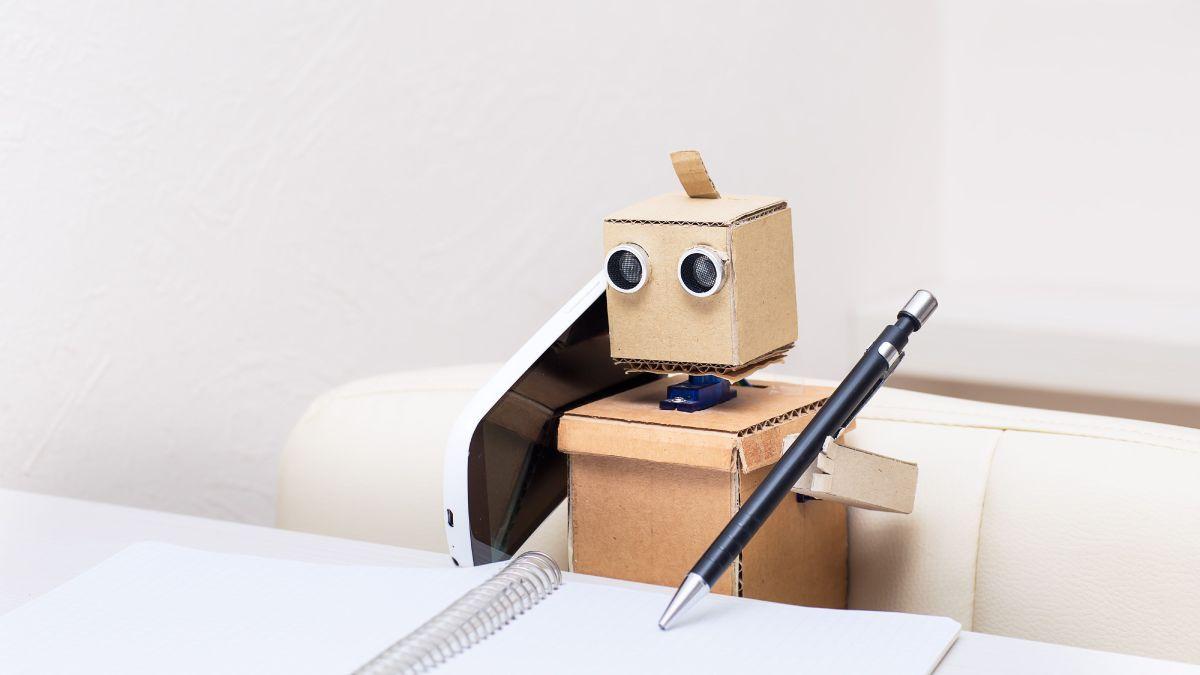AI Hiring Tools Under Scrutiny: Uncovering Algorithmic Bias in Recruitment
2 Sources
2 Sources
[1]
When AI plays favourites: How algorithmic bias shapes the hiring process
University of Calgary provides funding as a member of The Conversation CA-FR. A public interest group filed a U.S. federal complaint against artificial intelligence hiring tool, HireVue, in 2019 for deceptive hiring practices. The software, which has been adopted by hundreds of companies, favoured certain facial expressions, speaking styles and tones of voice, disproportionately disadvantaging minority candidates. The Electronic Privacy Information Center argued HireVue's results were "biased, unprovable and not replicable." Though the company has since stopped using facial recognition, concerns remain about biases in other biometric data, such as speech patterns. Similarly, Amazon stopped using its AI recruitment tool, as reported in 2018, after discovering it was biased against women. The algorithm, trained on male-dominated resumes submitted over 10 years, favoured male candidates by downgrading applications that included the word "women's" and penalizing graduates of women's colleges. Engineers tried to address these biases, but could not guarantee neutrality, leading to the project's cancellation. These examples highlight a growing concern in recruitment and selection: while some companies are using AI to remove human bias from hiring, it can often reinforce and amplify existing inequalities. Given the rapid integration of AI into human resource management across many organizations, it's important to raise awareness about the complex ethical challenges it presents. Ways AI can create bias As companies increasingly rely on algorithms to make critical hiring decisions, it's crucial to be aware of the following ways AI can create bias in hiring: 1. Bias in training data. AI systems rely on large datasets -- referred to as training data -- to learn patterns and make decisions, but their accuracy and fairness are only as good as the data they are trained on. If this data contains historical hiring biases that favour specific demographics, the AI will adopt and reproduce those same biases. Amazon's AI tool, for example, was trained on resumes from a male-dominated industry, which led to gender bias. 2. Flawed data sampling. Flawed data sampling occurs when the dataset used to train an algorithm is not representative of the broader population it's meant to serve. In the context of hiring, this can happen if training data over-represents certain groups -- typically white men -- while under-representing marginalized candidates. As a result, the AI may learn to favour the characteristics and experiences of the over-represented group while penalizing or overlooking those from underrepresented groups. For example, facial analysis technologies have shown to have higher error rates for racialized individuals, particularly racialized women, because they are underrepresented in the data used to train these systems. Read more: Artificial intelligence can discriminate on the basis of race and gender, and also age 3. Bias in feature selection. When designing AI systems, developers choose certain features, attributes or characteristics to be prioritized or weighed more heavily when the AI is making decisions. But these selected features can lead to unfair, biased outcomes and perpetuate pre-existing inequalities. For example, AI might disproportionately value graduates from prestigious universities, which have historically been attended by people from privileged backgrounds. Or, it might prioritize work experiences that are more common among certain demographics. This problem is compounded when the features selected are proxies for protected characteristics, such as zip code, which can be strongly related to race and socioeconomic status due to historical housing segregation. 4. Lack of transparency. Many AI systems function as "black boxes," meaning their decision-making processes are opaque. This lack of transparency makes it difficult for organizations to identify where bias might exist and how it affects hiring decisions. Without insight into how an AI tool makes decisions, it's difficult to correct biased outcomes or ensure fairness. Both Amazon and HireVue faced this issue; users and developers struggled to understand how the systems assessed candidates and why certain groups were excluded. 5. Lack of human oversight. While AI plays an important role in many decision-making processes, it should augment, rather than replace, human judgment. Over-reliance on AI without adequate human oversight can lead to unchecked biases. This problem is exacerbated when hiring professionals trust AI more than their own judgment, believing in the technology's infallibility. Overcoming algorithmic bias in hiring To mitigate these issues, companies must adopt strategies that prioritize inclusivity and transparency in AI-driven hiring processes. Below are some key solutions for overcoming AI bias: 1. Diversify training data. One of the most effective ways to combat AI bias is to ensure training data is inclusive, diverse and representative of a wide range of candidates. This means including data from diverse racial, ethnic, gender, socioeconomic and educational backgrounds. 2. Conduct regular bias audits. Frequent and thorough audits of AI systems should be conducted to identify patterns of bias and discrimination. This includes examining the algorithm's outputs, decision-making processes and its impact on different demographic groups. 3. Implement fairness-aware algorithms. Use AI software that incorporates fairness constraints and is designed to consider and mitigate bias by balancing outcomes for underrepresented groups. This can include integrating fairness metrics such as equal opportunity, modifying training data to show less bias and adjusting model predictions based on fairness criteria to increase equity. 4. Increase transparency. Seek AI solutions that offer insight into their algorithms and decision-making processes to make it easier to identify and address potential biases. Additionally, make sure to disclose any use of AI in the hiring process to candidates to maintain transparency with your job applicants and other stakeholders. 5. Maintain human oversight. To maintain control over hiring algorithms, managers and leaders must actively review AI-driven decisions, especially when making final hiring choices. Emerging research highlights the critical role of human oversight in safeguarding against the risks posed by AI applications. However, for this oversight to be effective and meaningful, leaders must ensure that ethical considerations are part of the hiring process and promote the responsible, inclusive and ethical use of AI. Bias in hiring algorithms raises serious ethical concerns and demands greater attention toward the mindful, responsible and inclusive use of AI. Understanding and addressing the ethical considerations and biases of AI-driven hiring is essential to ensuring fairer hiring outcomes and preventing technology from reinforcing systemic bias.
[2]
When AI plays favorites: How algorithmic bias shapes the hiring process
A public interest group filed a U.S. federal complaint against artificial intelligence hiring tool, HireVue, in 2019 for deceptive hiring practices. The software, which has been adopted by hundreds of companies, favored certain facial expressions, speaking styles and tones of voice, disproportionately disadvantaging minority candidates. The Electronic Privacy Information Center argued HireVue's results were "biased, unprovable and not replicable." Though the company has since stopped using facial recognition, concerns remain about biases in other biometric data, such as speech patterns. Similarly, Amazon stopped using its AI recruitment tool, as reported in 2018, after discovering it was biased against women. The algorithm, trained on male-dominated resumes submitted over 10 years, favored male candidates by downgrading applications that included the word "women's" and penalizing graduates of women's colleges. Engineers tried to address these biases, but could not guarantee neutrality, leading to the project's cancellation. These examples highlight a growing concern in recruitment and selection: while some companies are using AI to remove human bias from hiring, it can often reinforce and amplify existing inequalities. Given the rapid integration of AI into human resource management across many organizations, it's important to raise awareness about the complex ethical challenges it presents. Ways AI can create bias As companies increasingly rely on algorithms to make critical hiring decisions, it's crucial to be aware of the following ways AI can create bias in hiring: 1. Bias in training data. AI systems rely on large datasets -- referred to as training data -- to learn patterns and make decisions, but their accuracy and fairness are only as good as the data they are trained on. If this data contains historical hiring biases that favor specific demographics, the AI will adopt and reproduce those same biases. Amazon's AI tool, for example, was trained on resumes from a male-dominated industry, which led to gender bias. 2. Flawed data sampling. Flawed data sampling occurs when the dataset used to train an algorithm is not representative of the broader population it's meant to serve. In the context of hiring, this can happen if training data over-represents certain groups -- typically white men -- while under-representing marginalized candidates. As a result, the AI may learn to favor the characteristics and experiences of the over-represented group while penalizing or overlooking those from underrepresented groups. For example, facial analysis technologies have shown to have higher error rates for racialized individuals, particularly racialized women, because they are underrepresented in the data used to train these systems. 3. Bias in feature selection. When designing AI systems, developers choose certain features, attributes or characteristics to be prioritized or weighed more heavily when the AI is making decisions. But these selected features can lead to unfair, biased outcomes and perpetuate pre-existing inequalities. For example, AI might disproportionately value graduates from prestigious universities, which have historically been attended by people from privileged backgrounds. Or, it might prioritize work experiences that are more common among certain demographics. This problem is compounded when the features selected are proxies for protected characteristics, such as zip code, which can be strongly related to race and socioeconomic status due to historical housing segregation. 4. Lack of transparency. Many AI systems function as "black boxes," meaning their decision-making processes are opaque. This lack of transparency makes it difficult for organizations to identify where bias might exist and how it affects hiring decisions. Without insight into how an AI tool makes decisions, it's difficult to correct biased outcomes or ensure fairness. Both Amazon and HireVue faced this issue; users and developers struggled to understand how the systems assessed candidates and why certain groups were excluded. 5. Lack of human oversight. While AI plays an important role in many decision-making processes, it should augment, rather than replace, human judgment. Over-reliance on AI without adequate human oversight can lead to unchecked biases. This problem is exacerbated when hiring professionals trust AI more than their own judgment, believing in the technology's infallibility. Overcoming algorithmic bias in hiring To mitigate these issues, companies must adopt strategies that prioritize inclusivity and transparency in AI-driven hiring processes. Below are some key solutions for overcoming AI bias: 1. Diversify training data. One of the most effective ways to combat AI bias is to ensure training data is inclusive, diverse and representative of a wide range of candidates. This means including data from diverse racial, ethnic, gender, socioeconomic and educational backgrounds. 2. Conduct regular bias audits. Frequent and thorough audits of AI systems should be conducted to identify patterns of bias and discrimination. This includes examining the algorithm's outputs, decision-making processes and its impact on different demographic groups. 3. Implement fairness-aware algorithms. Use AI software that incorporates fairness constraints and is designed to consider and mitigate bias by balancing outcomes for underrepresented groups. This can include integrating fairness metrics such as equal opportunity, modifying training data to show less bias and adjusting model predictions based on fairness criteria to increase equity. 4. Increase transparency. Seek AI solutions that offer insight into their algorithms and decision-making processes to make it easier to identify and address potential biases. Additionally, make sure to disclose any use of AI in the hiring process to candidates to maintain transparency with your job applicants and other stakeholders. 5. Maintain human oversight. To maintain control over hiring algorithms, managers and leaders must actively review AI-driven decisions, especially when making final hiring choices. Emerging research highlights the critical role of human oversight in safeguarding against the risks posed by AI applications. However, for this oversight to be effective and meaningful, leaders must ensure that ethical considerations are part of the hiring process and promote the responsible, inclusive and ethical use of AI. Bias in hiring algorithms raises serious ethical concerns and demands greater attention to the mindful, responsible and inclusive use of AI. Understanding and addressing the ethical considerations and biases of AI-driven hiring is essential to ensuring fairer hiring outcomes and preventing technology from reinforcing systemic bias.
Share
Share
Copy Link
An examination of how AI-powered hiring tools can perpetuate and amplify biases in the recruitment process, highlighting cases involving HireVue and Amazon, and exploring solutions to mitigate these issues.

AI Hiring Tools Face Scrutiny Over Algorithmic Bias
The integration of artificial intelligence (AI) in recruitment processes has come under intense scrutiny due to concerns about algorithmic bias. Recent cases involving prominent companies have highlighted how AI-powered hiring tools can perpetuate and even amplify existing inequalities, raising important questions about fairness and ethics in the hiring process.
HireVue's Controversial Facial Analysis
In 2019, HireVue, an AI hiring tool used by hundreds of companies, faced a federal complaint filed by the Electronic Privacy Information Center
1
. The tool was accused of engaging in deceptive hiring practices by favoring certain facial expressions, speaking styles, and tones of voice, which disproportionately disadvantaged minority candidates. Although HireVue has since discontinued the use of facial recognition, concerns persist about potential biases in other biometric data, such as speech patterns2
.Amazon's Gender-Biased Recruitment Algorithm
Another high-profile case emerged in 2018 when Amazon abandoned its AI recruitment tool after discovering inherent gender bias
1
. The algorithm, trained on resumes predominantly from male candidates submitted over a decade, showed a clear preference for male applicants. It went as far as downgrading applications containing the word "women's" and penalizing graduates of women's colleges. Despite efforts to address these biases, Amazon's engineers could not guarantee the tool's neutrality, leading to the project's termination.Related Stories
Sources of AI Bias in Hiring
Several factors contribute to algorithmic bias in AI-powered hiring tools:
-
Biased Training Data: AI systems learn from historical data, which may contain existing biases, leading to the perpetuation of discriminatory practices
1
. -
Flawed Data Sampling: Underrepresentation of certain groups in training datasets can result in AI systems favoring characteristics of overrepresented groups
2
. -
Biased Feature Selection: The choice of attributes prioritized by AI systems can inadvertently favor certain demographics, such as graduates from prestigious universities
1
. -
Lack of Transparency: Many AI systems operate as "black boxes," making it difficult to identify and address biases in their decision-making processes
2
. -
Insufficient Human Oversight: Over-reliance on AI without adequate human supervision can lead to unchecked biases in hiring decisions
1
.
Strategies to Mitigate AI Bias in Hiring
To address these challenges, experts recommend several strategies:
-
Diversify Training Data: Ensure AI systems are trained on inclusive and representative datasets
2
. -
Conduct Regular Bias Audits: Implement frequent and thorough examinations of AI systems to identify discriminatory patterns
1
. -
Implement Fairness-Aware Algorithms: Utilize AI software designed with built-in fairness constraints to mitigate bias
2
. -
Increase Transparency: Opt for AI solutions that provide insights into their decision-making processes, facilitating easier identification and correction of biases
1
.
References
Summarized by
Navi
[1]
Related Stories
Recent Highlights
1
Google launches Gemini 3 Flash as default AI model, delivering speed with Pro-grade reasoning
Technology

2
OpenAI launches GPT Image 1.5 as AI image generator war with Google intensifies
Technology

3
OpenAI launches ChatGPT app store, opening doors for third-party developers to build AI-powered apps
Technology








